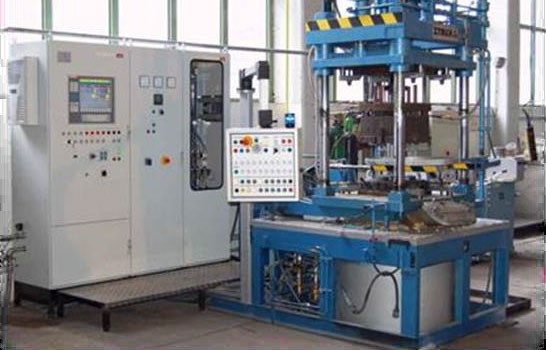
The objects in this PL are produced with the utilization of dies. One half of the die is attached to a fixed machine plate and the other to a movable one on a die-casting machine that isvertically aligned. The furnace for molten metal is locate beneath the fixed plate and by applying pressure of up to max bar to the furnace pushes the molten metal up through an intake port into the die chamber. After filling the die, the pressure is maintained as the metal cools to enable the addition of further molten metal to counter any volume deficits (shrinkage cavities) as the metal passes from its molten to solid state. The method can produce components with complex geometries and high dimensional accuracy in slower casting cycles compared to HPDC. It is fully automated and needs low complexity die technology.

Improvement of NPs distribution in the melt (increased wetting conditions) and
consequently in the final products by application of ultrasonication and
electromagnetic stirring
systems. Use of cover gases will lead to stabilization of NPs and prevention of
reactions at elevated temperature that causes the release of deleterious gases.
NDT monitoring systems applied will lead in reliable results with low
variability, consistent cycles that will provide predictable material structures
and therefore higher repeatability and
quality standards.
The main materials that will be processed are MMC of Aluminum and Magnesium
alloys. More specifically the
following two commercial alloys will be used, combined with various ceramic
nanoparticles (e.g. SiC or Al2O3 etc.)
A 356. It is a Aluminum alloy with 7Si-0.3Mg alloy with 0.2 Fe and 0.1 Zn. It present great elongation,high strength and increased ductility. Due to its low iron content it presents improved mechanical properties.
AZ91D. It is the most widely used magnesium die cast alloy and has excellent combination of mechanical properties, corrosion resistance and castability.